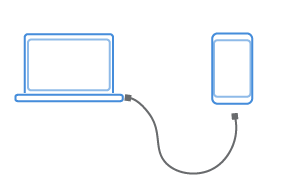How to install Sailfish X on Xperia™ 10 II

The instructions provide you step-by-step guidance how to install Sailfish X on Xperia™ 10 II.
During this process you will install fastboot driver, download Sailfish X and necessary software binaries, unlock the bootloader of the phone, and last but not least, flash Sailfish X to your phone.
The process will take an average of 25 minutes.
3 Install the fastboot driver to your computer

Here is how to install fastboot tools on different Linux distributions using terminal:
Debian/Ubuntu/.deb distributions:
sudo apt-get install android-tools-fastboot
Fedora:
dnf install android-tools
OpenSUSE:
zypper install android-tools
4 Get Sailfish X

4.1 Get the latest Sailfish X software from Jolla’s software download page. There, look for your phone, Xperia™ 10 II, either the single SIM (XQ-AU51) or dual SIM (XQ-AU52) variant, and then download the related software. Download from here.
4.2 Extract the contents of the zip file to a folder.
5 Get the Sony software binaries

5.1 Download the Sony Software binaries for AOSP
SW_binaries_for_Xperia_Android_10.0.7.1_r1_v12b_seine.zip
Download from here.
5.2 Extract the contents of the zip file to a folder
5.3 Copy the resulting ‘.img’ file to the same folder as in chapter 4.2
6 Enable developer options on your phone

6.1 Ensure that the phone has internet connection
6.2 On the phone, go to Settings app > About Phone, write down the IMEI number for later use. If there are two IMEI numbers, then only mark the IMEI of the sim slot 1.
6.3 Tap on Build number multiple times to enable Developer options.
6.4 Go to Settings > System > Advanced > Developer options, and enable OEM unlocking (use the slider even if it appeared greyed out) and USB debugging.
7 Unlock the bootloader

7.1 Take your computer.
7.2 You need an unlock code from Sony web page. Please read the instructions carefully. See the Sony web page.
7.3 Proceed to the bottom of the page where it says Select your device.
7.4 Select your phone, Xperia™ 10 II
7.5 Enter the IMEI, from chapter 6.2, into the web page’s input field, acknowledge warranty terms and then click Submit.
7.6 The unlock code will appear. Write it down for later use.
7.7 Switch off your phone and wait until the LED is off.
7.8 Press and hold the Volume up button and connect the other end of the USB cable to your phone and wait for the LED to light up blue. If it turns green then disconnect the cable and try again
7.9 Open Terminal, and use “cd” to proceed to your Sailfish OS folder the same as in 4.2.
7.10 Enter the following command into the terminal app:
sudo fastboot oem unlock 0x[insert your received unlock code]
7.11 On the terminal, you should see the output similar to this:
sudo fastboot oem unlock 0xF6147ED3A507FBAD
OKAY [ 1.716s]
finished. total time: 1.720s
7.12 Disconnect the USB cable from your phone. Then, turn the phone on and let it boot up to the UI. No need to run the “Get started” phase. Just turn the phone off. This will complete the unlocking session.
8 Flash Sailfish X

NOTE:
If you did not yet restart the phone at step 7.12 do it now or else you will need to do the flashing (chapter 8) two times!
8.1 Make sure your phone is powered off. The LED must not show any light.
8.2 Hold down the Volume Up button and connect the other end of the USB cable to the phone. The LED next to the speaker on the phone should light up blue.
8.3 On terminal, use “cd” to proceed to your Sailfish OS folder the same as in 4.2
8.4 Launch the flashing script by entering the command:
sudo ./flash.sh
8.5 Follow the instructions in the console window. The last two lines at the console should be:
Flashing completed.
Remove the USB cable and bootup the device by pressing powerkey.
8.6 Detach the cable after the flashing has finished.
8.7 Reboot your phone into Sailfish X!
If the phone keeps the blue LED lit (so it doesn’t turn off) use this trick. Then use the Power key to turn the phone on.
8.8 First, you will see a reminder of an unlocked bootloader, which can be ignored, and then the Sailfish OS logo.
NOTE: A sine sweep sound is played, unfortunately, when booting up this first time.
8.9 Sign in to your Jolla account in order to get the Android AppSupport and other licensed content. The Jolla account must be the same as the one you used when purchasing the Sailfish X licence.
8.10 Next, you can install more Sailfish apps from the Jolla Store or Android apps from stores like Aurora and F-Droid.
8.11 Please restart your Xperia 10 II once at this point to activate all services and complete the installation.
Happy flashing!










